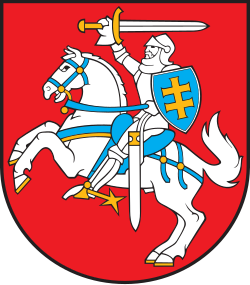Electoral system
The law on the conduct of Seimas elections was promulgated by the Council of Lithuania in the official newspaper of the government, Vyriausybės žinios (Government News) on 30 October 1919. [2] Elections were to be universal, free and secret, and all citizens of Lithuania, both men and women over 21 years old, were allowed to vote. Citizens 24 years old or older were allowed to stand for election.
The elections were held using party-list proportional representation in nine multi-member constituencies. In practice, elections took place in only six of the nine constituencies as constituencies VII (Vilnius), VIII (Lida) and IX (Hrodna) were allocated to territories occupied by Poland during the Polish–Lithuanian War in 1920.
Parties and electoral groups (kuopa) were allowed to submit lists of candidates in constituencies, which had to be signed by at least fifty voters. As a result, there was a large number of small electoral lists in every constituency.
This page is based on this
Wikipedia article Text is available under the
CC BY-SA 4.0 license; additional terms may apply.
Images, videos and audio are available under their respective licenses.

